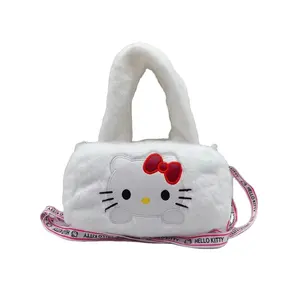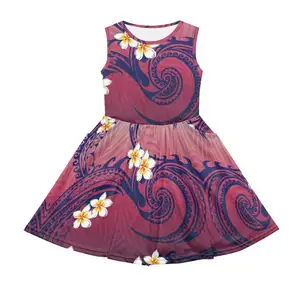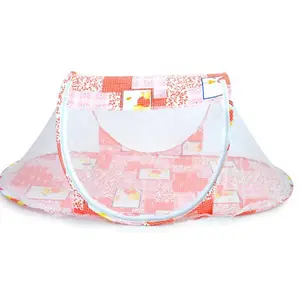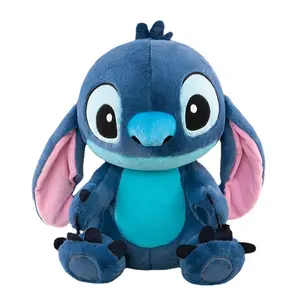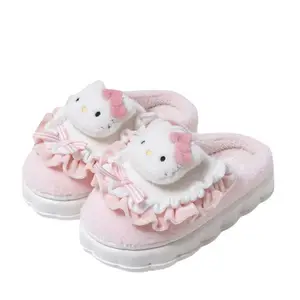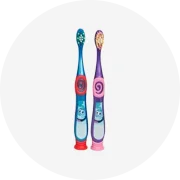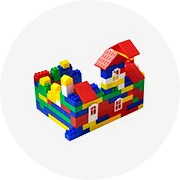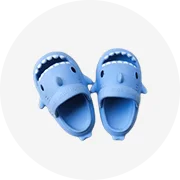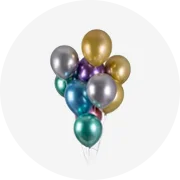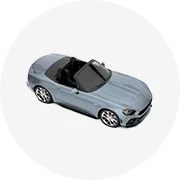Populair in uw branche


Pasgeboren Baby Kleding Kids Slaapzak Stof Effen Effen 0.5 Tog 1.0 Tog 100% Bamboe Spandex Gebreide Slaapzak Slaapzak
€ 3,65 - € 8,31
Min. bestelling: 50 stukken







Compact Ultralight Draagbare Waterdichte Custom Envelop Napper Buiten Camping Slaapzak Wearable Slaapzak Met Kap
€ 2,80 - € 4,01
Min. bestelling: 1 stuk







Hoge Kwaliteit Hothome Camping Outdoor Nood Slaapzak Met Trekkoord Groothandel China Survival Slaapzak
€ 2,29 - € 3,18
Min. bestelling: 2 stukken




Odm Mummie Slaapzak Voor Volwassen Winter Warm Slaapzak Inpakbare Survival Slaapzak
€ 18,67 - € 20,54
Min. bestelling: 2 stukken







Homful Ultralight Draagbare Polyester Winter Outdoor Volwassenen Compact Enkele Camping Slaapzak
€ 2,71 - € 4,21
Min. bestelling: 100 stukken







Ripstop Compressie Stuff Sack Lichtgewicht Slaapzak Compressie Zak Geweldig Voor Backpacken, Wandelen En Kamperen
€ 2,81 - € 5,61
Min. bestelling: 500 stukken





Kids Warme Lichtgewicht Dinosaurus Patroon Envelop Stijl Kinderen Slaapzak Met Kussen Dutje Tijd
€ 4,58 - € 4,67
Min. bestelling: 2000 stukken






Gsd Outdoor Slaapzak Liner Camping Lakens Slaapzak Camping Reisbed Met Onderste Open Reisblad Slaapzak Voor Reizen
€ 5,79 - € 6,07
Min. bestelling: 500 stukken




Custom Patroon Outdoor Eco-Vriendelijke Rpet Draagbare Mummie Slaapzak Outdoor Camping Slaapzak
€ 7,66 - € 18,02
Min. bestelling: 1000 stukken






Saco De Dormir Aangepaste Patronen Logo Voor Volwassen Slaapzak Voering Reislakens Voor Wandelen
€ 10,27 - € 16,81
Min. bestelling: 1 stuk






Nieuwe Ontwerp Creatieve Cartoon Hot Koop Zachte Pluche Vacuüm Pakket Alle Seizoen Kids Slaperig Sack Slaapzak Met Kussen Voor kinderen
€ 4,07 - € 5,59
Min. bestelling: 2 stukken






Draagbare Ultralight Comfortabele Dikke Lucht Opblazen Slapen Pad
€ 15,87 - € 16,81
Min. bestelling: 1000 stukken
Gerelateerde zoekopdrachten:






Supersoft Flanellen Dubbele Slaapzak Twinslightweight Waterdichte 2 Persoon Slaapzak Met 2 Kussens Voor Camping Backpacken
€ 2,80 - € 18,66
Min. bestelling: 300 stukken




Custom Patroon Outdoor Eco-Vriendelijke Rpet Draagbare Mummie Slaapzak Outdoor Camping Slaapzak
€ 7,66 - € 18,02
Min. bestelling: 1000 stukken






Gezellige Animal Kids Slumber Sack Slapen Tassen Rugzak Tent Beste Slaapzak Camping Voor Kids Volwassenen Kind 3 Seizoen
€ 5,65 - € 6,22
Min. bestelling: 500 stukken






Kinderen Slaapzak Met Kap Quilt Outdoor Camping Tijger Patroon Leuke Mooie Dutje Tijd
€ 6,07
Min. bestelling: 1000 stukken






Merklabels Envelop Enkellaags Polyloft Vulling Met Patroon T/C Gevoerd Lage Temperatuur Zachte Vierkante Bergslaapzak
€ 5,42 - € 22,87
Min. bestelling: 1000 stukken






Ring Kamp Happy Warm Prijs Custom Design Multifunctionele Kinderen Dier Slaapzak Kind Voor Kinderen Kinderen
€ 6,05 - € 8,86
Min. bestelling: 30 stukken
Verzending per stuk: € 9,27





Stijlvolle Synthetische Vezel Kampeeruitrusting Zip Baffle 4 Seizoen Draagbare Thermische Slaapzak Met Patroon Voor Buitensporten
€ 8,03 - € 19,33
Min. bestelling: 1000 stukken






Roze Schattige Kinderen Slaapzak Met Dier Patroon Kussen Binnen Camping Reizen Anti-Kick Dutje Tijd
€ 10,74
Min. bestelling: 1200 stukken






Merklabels Envelop Enkellaags Polyloft Vulling Met Patroon T/C Gevoerd Lage Temperatuur Zachte Vierkante Bergslaapzak
€ 5,42 - € 22,87
Min. bestelling: 1000 stukken






Merklabels Envelop Enkellaags Polyloft Vulling Met Patroon T/C Gevoerd Lage Temperatuur Zachte Vierkante Bergslaapzak
€ 5,42 - € 22,87
Min. bestelling: 1000 stukken






Ring Kamp Custom Baby Katoenen Slaapzak Pasgeboren Kids Lichtgewicht Kinderen Zomer Slaapzak Voor Kinderen Kids
€ 10,26 - € 11,01
Min. bestelling: 20 stukken
Verzending per stuk: € 12,68






Volwassen Kick-Proof En Vuilafstotend Outdoor Camping Dutje Tijd Mummie Kinderen Slaapzak Mooie Kat Patroon
€ 8,41
Min. bestelling: 1000 stukken





Custom Labelling Kampeerspullen Sleepover W/R Dubbellaags Mummie Patroon Slaapzak Leverancier Voor Wandelaar Met Anti Bite Zip
€ 7,38 - € 17,65
Min. bestelling: 1000 stukken






Op Maat Gemaakte Breipatroon 100% Katoen Winter Gewogen Baby Swaddle Slaapzak, Minky Dot Fleece Baby Slaapzak
€ 7,47 - € 11,21
Min. bestelling: 100 stukken






Mimixiong Hot Sale Peuter Kleding Schattige Cartoon Konijn Patroon Pasgeboren Baby Drie-Laags Gebreide Slaapzak Zak
€ 7,94 - € 8,97
Min. bestelling: 3 stukken






Custom Gots Biologisch Katoen Prijs Kan Worden Onderhandeld Schattige Beer Patroon Baby Slaapzak Pasgeboren Slaapzak
€ 3,64 - € 6,53
Min. bestelling: 100 stukken






Groothandel Baby Slaapzak En Zak, Dierenpatroon, 2.5 Tog Warm Gewatteerd Wintermodel
€ 4,86 - € 5,42
Min. bestelling: 10 stukken






Katoen Dikker Slaapzak Kinderwagen Zak Voor Pasgeboren Baby Cartoon Patroon Kinderen Beddengoed Split Been Warme Winter Kleding
€ 12,60 - € 13,06
Min. bestelling: 2 stukken






Pasgeboren Babykleding Kids Slaapzak Natuurlijke Stof Effen Rawitt Patroon 100% Katoenen Gebreide Slaapzak
€ 4,67 - € 5,05
Min. bestelling: 3 sets
Verzending per stuk: € 16,82





Baby slaapzak envelop inbakeren sack voor pasgeboren baby cocoon cartoon patroon luier cocon voor pasgeborenen
€ 15,13 - € 15,78
Min. bestelling: 3 stukken






Happyfluit 0.5 Tog Slaapzak Baby Swaddle Zak Uniek Patroon Draagbare Slaapdeken Zak Voor Baby
€ 4,58 - € 6,07
Min. bestelling: 50 stukken


Odm 4-In-1 Verstelbare Babyslaapzak Met Effen Patroon Omhullende Buikband Voor Nauwsluitende Pasvorm Slaapzak
€ 7,19 - € 9,06
Min. bestelling: 600 stukken






Baby Breipatroon Baby Slaapzak 100% Biologisch Katoen Baby Slaapzak
€ 7,47 - € 8,39
Min. bestelling: 20 stukken






Baby Jongens En Meisjes Winter Draagbare Deken Baby Slaapzak En Pak Met Stevige Patroon Slaapzak Voor Voeten En Benen Dekking
€ 7,38 - € 10,09
Min. bestelling: 100 stukken






Lente En Zomer Slaapzak Pasgeboren Baby Kleding Super Zacht Katoen Custom Patroon Slaapzak
€ 2,43 - € 5,33
Min. bestelling: 10 sets






Afneembare Mouwen Baby Slaapzak Met Benen Ademend 100% Katoenen Peuter Slaapzak Effen Patroon
€ 4,86 - € 6,26
Min. bestelling: 100 stukken






Comfortabele Peuter Slaapzakken Dubbellaags Katoen Baby Slaapzakken Schattig Patroon Kinderen Slaapzak
€ 9,33 - € 13,06
Min. bestelling: 100 stukken
Topcategorieën
Over slaapzak patroon
Gift stijlvol en aantrekkelijk. slaapzak patroon aan uw kinderen van toonaangevende leveranciers en groothandels op Alibaba.com. Deze. slaapzak patroon hebben een uniek ontwerp en zijn extreem ruim om al hun schoolspullen in te vervoeren. Er zijn diverse trendy dessins verkrijgbaar, die van duurzame kwaliteit zijn en lang mee kunnen gaan. Bestel deze. slaapzak patroon nu uit een brede reeks ontwerpen en u kunt ze zelfs op maat afdrukken volgens uw keuze van stijl en ontwerpen.
Aangepast. slaapzak patroon zijn erg populair bij kinderen, omdat u de gewenste look kunt krijgen of ze zelfs in verschillende kleuren kunt kopen, afhankelijk van uw voorkeuren. Deze. slaapzak patroon zijn erg ruim en kunnen veel spullen dragen, en worden geleverd met brede banden die zacht zijn voor de schouders en het gewicht gelijkmatig verdelen. Ze zijn waterdicht en helpen uw eigendommen te beschermen. U kunt kiezen uit een groot aantal. slaapzak patroon die perfect zijn voor zowel jongens als meisjes. Deze unisex-producten zijn scheurbestendig en bestand tegen dagelijks zwaar gebruik.
Deze. slaapzak patroon die op Alibaba.com worden verkocht, zijn niet alleen gemakkelijk mee te nemen, maar zijn ook gemaakt van de beste kwaliteit polyester materialen om langdurige prestaties te garanderen. Deze. slaapzak patroon zijn verkrijgbaar in verschillende maten en worden geleverd met hoogwaardige ritssluitingen. Verstelbare bandjes, levendige kleuren en eersteklas materiaalkwaliteit zijn enkele van de redenen voor hun immense populariteit. De ritsen hiervan. slaapzak patroon kan worden gemaakt van metaal, nylon of zelfs plastic.
Alibaba.com biedt u de kans om geld te besparen door een enorm assortiment aan. slaapzak patroon die binnen uw budget past. U kunt ook tassen vinden voor wandelen of andere activiteiten, van stevige en duurzame kwaliteit. OEM-bestellingen zijn beschikbaar en u moet zeker profiteren van de geweldige kortingen die erop worden aangeboden.
Aangepast. slaapzak patroon zijn erg populair bij kinderen, omdat u de gewenste look kunt krijgen of ze zelfs in verschillende kleuren kunt kopen, afhankelijk van uw voorkeuren. Deze. slaapzak patroon zijn erg ruim en kunnen veel spullen dragen, en worden geleverd met brede banden die zacht zijn voor de schouders en het gewicht gelijkmatig verdelen. Ze zijn waterdicht en helpen uw eigendommen te beschermen. U kunt kiezen uit een groot aantal. slaapzak patroon die perfect zijn voor zowel jongens als meisjes. Deze unisex-producten zijn scheurbestendig en bestand tegen dagelijks zwaar gebruik.
Deze. slaapzak patroon die op Alibaba.com worden verkocht, zijn niet alleen gemakkelijk mee te nemen, maar zijn ook gemaakt van de beste kwaliteit polyester materialen om langdurige prestaties te garanderen. Deze. slaapzak patroon zijn verkrijgbaar in verschillende maten en worden geleverd met hoogwaardige ritssluitingen. Verstelbare bandjes, levendige kleuren en eersteklas materiaalkwaliteit zijn enkele van de redenen voor hun immense populariteit. De ritsen hiervan. slaapzak patroon kan worden gemaakt van metaal, nylon of zelfs plastic.
Alibaba.com biedt u de kans om geld te besparen door een enorm assortiment aan. slaapzak patroon die binnen uw budget past. U kunt ook tassen vinden voor wandelen of andere activiteiten, van stevige en duurzame kwaliteit. OEM-bestellingen zijn beschikbaar en u moet zeker profiteren van de geweldige kortingen die erop worden aangeboden.
